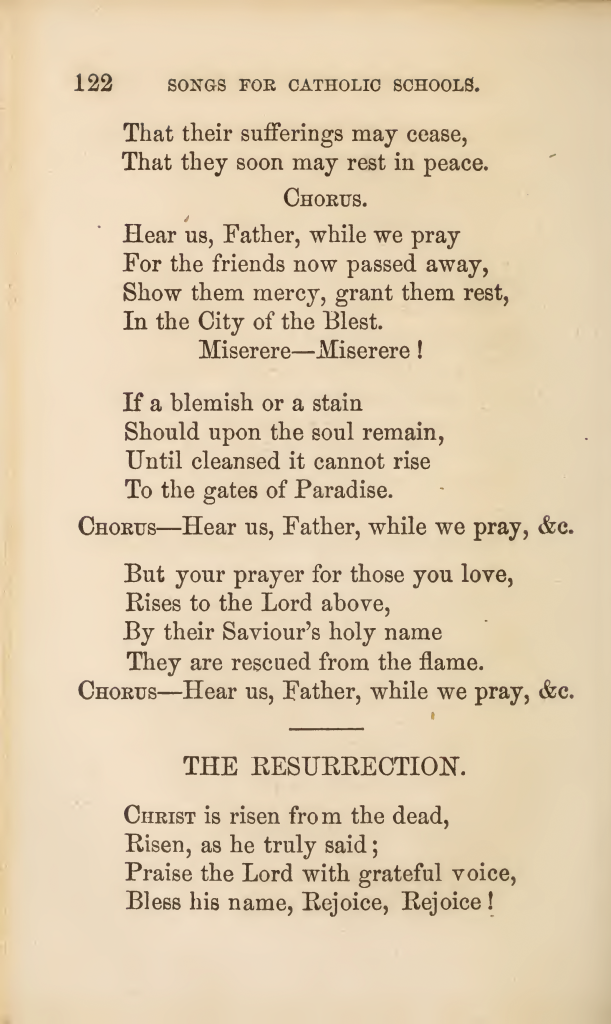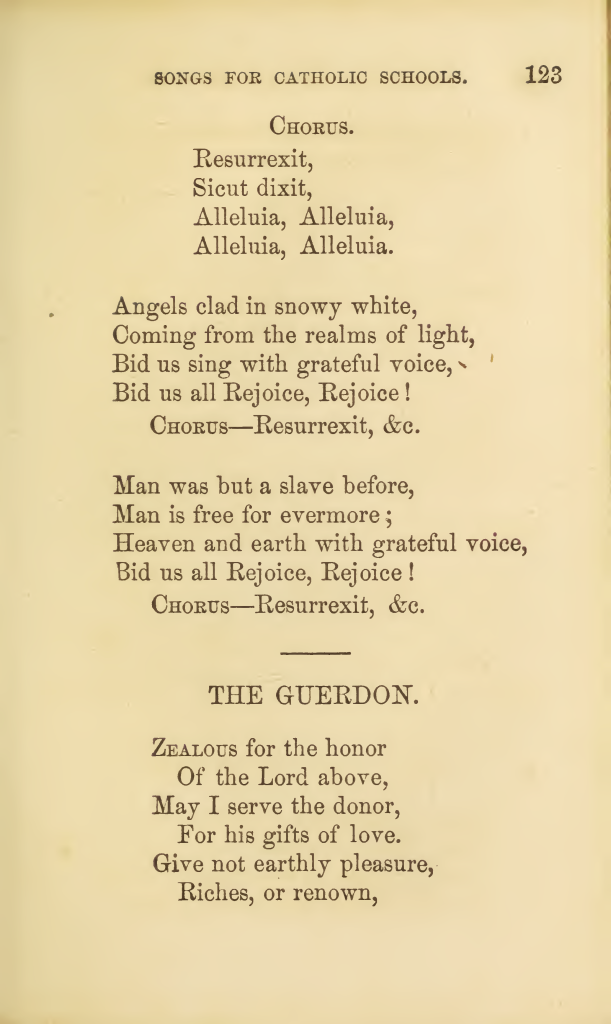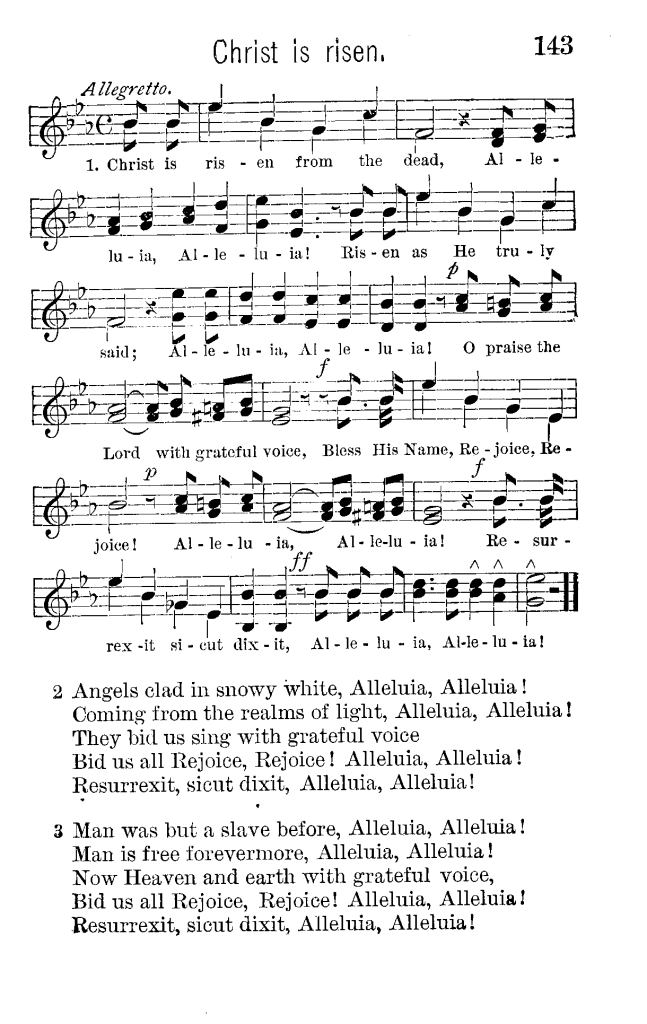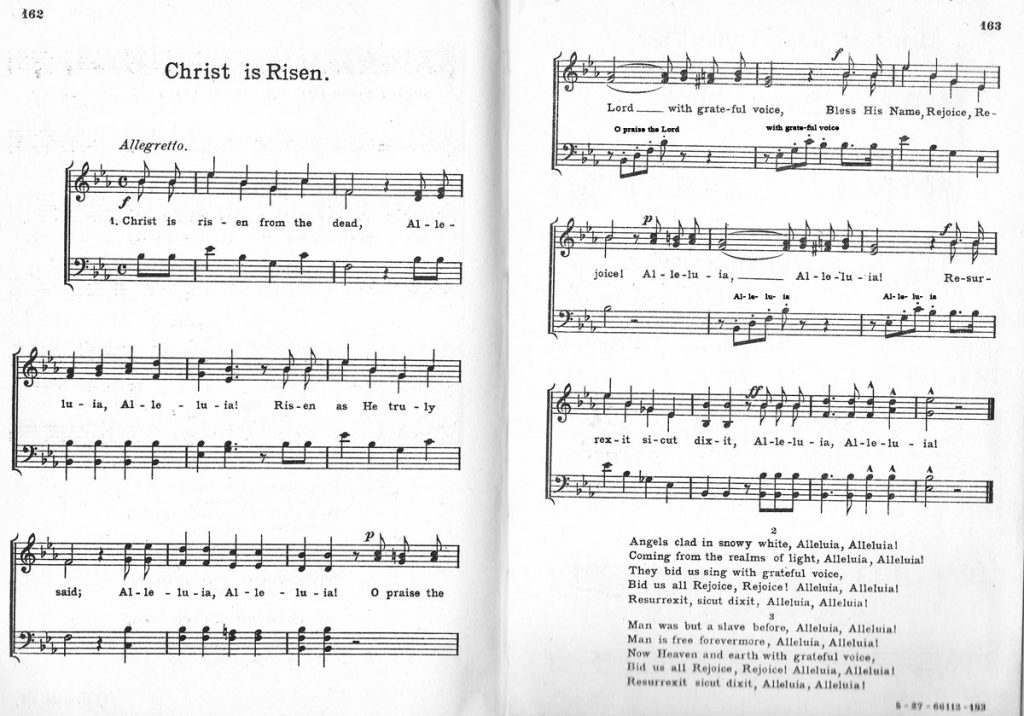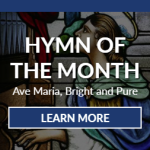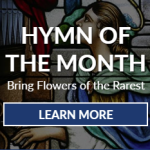This wonderful Easter hymn was written by Father Jeremiah Cummings (1814-1866) and it first appeared in his SONGS FOR CATHOLIC SCHOOLS, 1862 and was captioned The Resurrection. Father Cummings mother converted to Catholicism shortly after he was born. After his father’s death they moved to New York. He was young man when he was accepted as an ecclesiastical student in Bishop Dubois seminary in Nyack. He went to the College of the Propaganda at Rome to make his theological studies and was ordained as a priest on January 3, 1847. He earned his Doctor of Divinity and returned to New York and served as a priest at the Old St. Patrick’s Cathedral. During his service at St. Patrick’s, he proved himself as linguist, writer, and musician, and a popular preacher and lecturer. In November of 1848, he was appointed pastor of St. Stephen’s Parish by Bishop John Hughes where he continued to serve until his death.
All the hymns found in the SONGS FOR CATHOLIC SCHOOLS except for one, Canticle on the Blessed Sacrament, were written or translated by Fr. Cummings. Several of Dr. Cumming’s hymns including Great God, whatever through Thy Church; O brightness of eternal Light, and Hail, Virgin of Virgins, appeared in Catholic hymnals but no attribution was given to Fr. Cummings. Fr. Hugh Thomas Henry (1862-1946) a noted author and translator of hymns including Long Live the Pope wrote a wonderful article that sheds light on the carelessness of some publishers and gives detailed proof of Fr. Cummings authorship. The article appeared in THE CATHOLIC HISTORICAL REVIEW, Volume One, No. 2, July 1915, captioned A Forgotten American Hymnodist.
The hymn text for Christ Is Risen also appeared in other Catholic hymnals including the CANTA SACRA, 1865; LAUDIS CORONA, 1880; the ROMAN HYMNAL, 1884; the SUNDAY SCHOOL HYMN BOOK, 1887 thru 1935; the CATHOLIC HYMNAL, 1920; the MANUAL OF SELECT CATHOLIC HYMNS, 1885 and 1924; and the PAROCHIAL HYMNAL, 1951. Other melodies were composed for the text including an adaptation of Mendelssohn’s Hark the Herald Angels Sing found in the LAUDIS CORONA.
The melody that I learned to sing was composed by a Sister of Notre Dame from the Philadelphia community and was first published in the SUNDAY SCHOOL HYMN BOOK, 1887. I don’t know which sister composed the melody because in those days’ authorship was not given to the individual but to the whole community. This melody and text also appeared in the 1907 and 1935 editions of the SUNDAY SCHOOL HYMN BOOK.
Reflection
This hymn was traditionally used as a recessional in our music program for Easter Vigil, Easter Sunday, and Sundays throughout Easter at St. Mary’s. The tenors would ad lib beginning in the first verse starting at measure ten, we would echo the sopranos and alto’s, O praise the Lord with grateful voice and again in measure fourteen, echoing Alleluia, Alleluia. I have included this adaptation though it was not original to the hymn. This is a lovely Easter hymn that preserves some of the Latin, Resurrexit sicut dixit which means He is risen as he said.
This hymn was written during a period that produced many hymns for school children, and we can see this in the simplicity of the verses which echo the Gospel account of Matthew.
After the sabbath, as the first day of the week was dawning (Matt. 29:1) Our Lord rose from the dead, Christ is risen from the dead, Alleluia. An angel appears from heaven, rolls back the stone, and sits down upon it and his appearance was like lightning and his cloths white as snow (Matt. 29:2-3), Angels clad in snowy white, coming from the realms of light. He announces to the women, go quickly, and tell the disciples, They bid us sing with grateful voice, bid us all Rejoice, Rejoice! that He is risen from the dead, Resurrexit sicut dixit, Alleluia! Alleluia! (Matt. 29:7). Even though the hymn was written for school children it is still a wonderful hymn to sing and should appeal to people of all ages.
You can play all of the hymns below.
The first recording is a computer generated sound file. The tempo is approximate but should provide the listener a good sense of what the hymn sounds like. The second recording is from a cassette tape of St. Mary’s Choir Easter Vigil, 1982. This hymn in the public domain. Music directors, if you use this hymn in your Easter Vigil or Easter Sunday program and you make a recording, contact the author and I may feature it in the What’s New section of the website. Bible verses cited above are from the NEW AMERICAN CATHOLIC BIBLE, 1971 edition.

